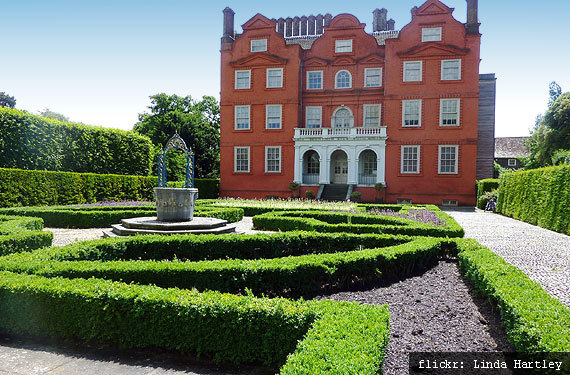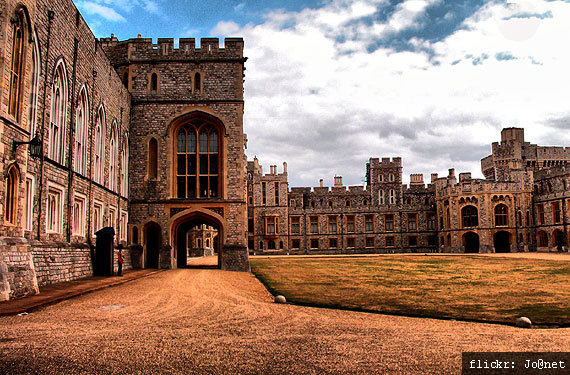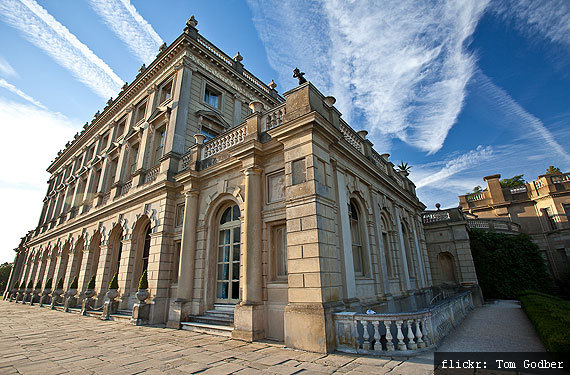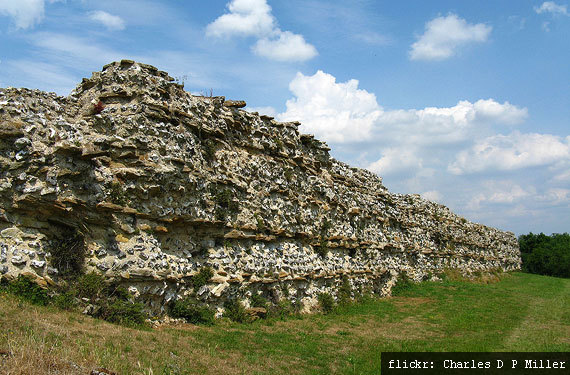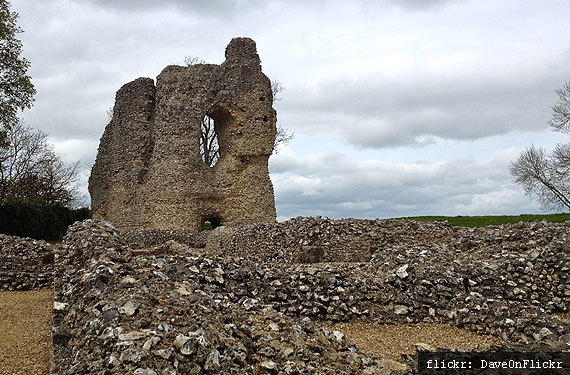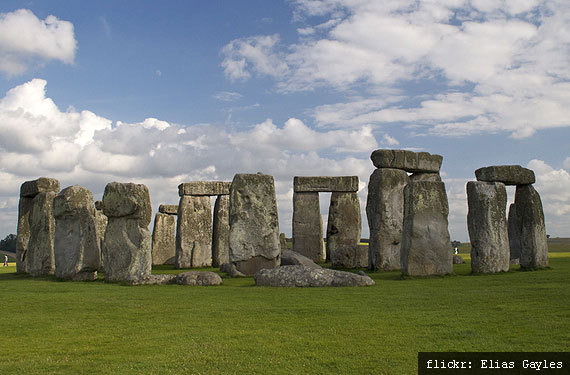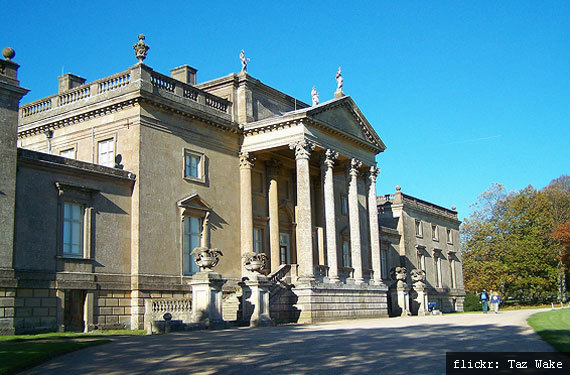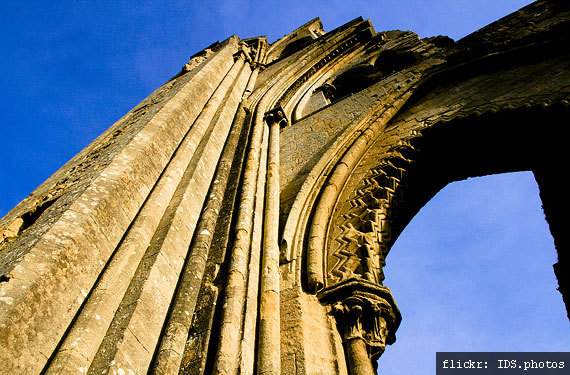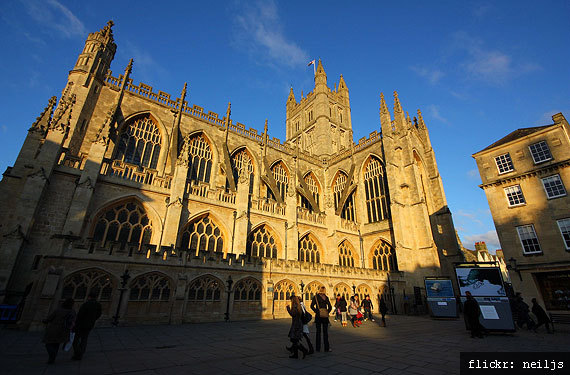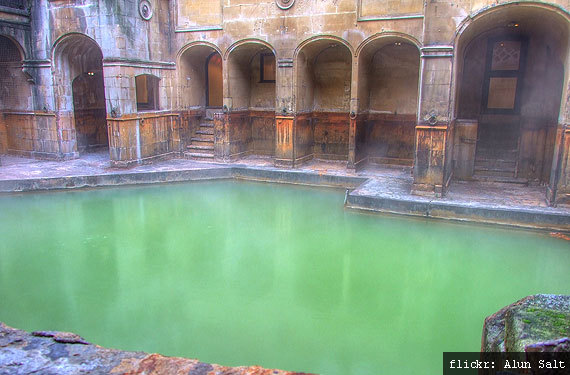For a road trip that promises bags of gobsmacking cultural allure, it's hard to beat the route from Britain's capital, London, to one of the country's most idyllic cities, Bath.
While today, millions of time-starved travellers take the fastest and most direct route possible - scooting along the asphalt-topped A4 and M4 - the route between these cities has been well trodden for thousands of years.
Indeed, before the Department of Transport started tarmacking the country, the route from Londinium (London) to Aquae Sulis (Bath) told a much more alluring story. The path out of London was ostensibly in two parts. The first section was the road from Londinium to Calleva Atrebatum (Silchester) and from there the road took travellers all the way to Aquae Sulis.
So if you're keen to follow in these ancient footsteps - and discover some incredible sights along the way - you check out this awesome road trip for history lovers and discover 2,000 years of fascinating history.
Stop 1: Kew Palace
Where: The Royal Botanical Gardens, Richmond, Surrey TW9 3AB
What: Historic royal palace
Distance: Approx. 9 miles from central London (from Charing Cross station)
Once you've done the rounds of London's most famous places - and even checked out some of the city's hidden wonders - then it's time to head west. Starting on the outskirts of the capital, Kew Palace is a seventeenth century royal palace on the banks of the Thames and its famous gardens make it one of the top tourist sites in the UK. For lovers of history though, it's all about the Palace. There have been three palaces on the site and the current incarnation, built in 1802 and designed in part by former resident King George III, is one of London's most popular palaces to visit.
Sitting within the grounds of the Royal Botanical Gardens, Kew Palace is noted for its distinctive brickwork and gables. Visitors can explore the palace itself, along with Queen Charlotte's cottage, the pagoda, the treetop walk and the many conservatories. It's within easy reach of central London (20 minutes from Waterloo) and visitors can marvel at the palm houses, the world's largest collection of living plants and of course the stunning palace itself.
Stop 2: Windsor Castle
Where: Windsor Castle, Windsor & Maidenhead, Berkshire SL4 1NJ
What: Royal residence
Distance: Approx. 19 miles from Kew Palace
From Kew head west straight as an arrow on the M4 motorway. After 20 miles or so you abandon the motorway and head to Windsor, home of the famous castle.
Windsor Castle is one of the oldest and largest inhabited castles in the world. The official residence of HM The Queen, it has been the family home of the British monarchy for 1,000 years and was originally built by William the Conqueror in the 11th century.
One of the most famous tourist attractions in the world with a fascinating (and often tumultuous) history, visitors can see the final resting places of King Henry VIII, Queen Victoria and Prince Albert as well as the famous 15th century Gothic St. George's Chapel, the State Apartments, the Round Tower and Queen Mary's Dolls' House amongst lots more.
Stop 3: Cliveden House
Where: Cliveden Road, Taplow, Maidenhead, Buckinghamshire SL1 8NS
What: Italianate country mansion and gardens
Distance: Approx. 9 miles from Windsor Castle
From Windsor, we jump back to the M4 before taking a short detour north to Cliveden. Set 40m above the banks of the Thames, Cliveden House is a magnificent Victorian Italianate mansion built in the 1850s that has been home to earls, countesses, dukes and princes as well as the Astor family. It has 375 acres of majestic gardens and woodlands, from the formality of the Parterre to the quirky topiary in the Long Garden and the 500m of winding passages in the Cliveden Maze.
The meeting place of the 'Cliveden Set', a group of pseudo-political influencers in the 1930s, Cliveden House was also the scene of the very British 'Profumo Affair' in 1961 where Secretary of State for War John Profumo had an illicit affair with 19 year-old model Christine Keeler. A stunning, ornate mansion, Cliveden is a very popular attraction and a perfect stop en route to Bath.
Stop 4: Silchester Roman Town
Where: Silchester, near Basingstoke on the Hampshire/Berkshire border
What: Roman town
Distance: Approx. 28 miles from Cliveden House
After Cliveden, we return to the trusty M4 for the last time on this trip before debunking south towards Tadley. Just before you reach Tadley, you'll find Silchester, home to the remains of a Roman town which was known as Calleva Atrebatum.
First occupied by the Romans around 45 AD, the town was an Iron Age oppidum - a defended settlement. It is home to what experts consider to be the best preserved Roman wall in Great Britain and unlike most Roman towns in Britain - which continued to exist for some time after the Romans left - Calleva Atrebatum was mysteriously and almost immediately abandoned. The Roman site covers around 107 acres and the earthworks and ruined walls remain visible, as does the amphitheatre which was added around 70-80 AD.
Stop 5: Ludgershall Castle
Where: Ludgershall, Andover, Wiltshire SP11 9QT
What: Ruined royal castle
Distance: Approx. 39 miles from Silchester
From Silchester, we head towards Basingstoke and then join another motorway, this time the M3, which we follow west until we reach the A342 and Ludgershall. Ludgershall Castle was a medieval royal castle and fortress built in the 12th century. It's a great example of a medieval ruins and makes for a nice stop on the way to Bath. It was most likely built by Edward of Salisbury, Sheriff of Wiltshire and had two adjacent enclosures surrounded by banks and ditches. The northern enclosure contained the great hall, royal apartments and a tower while the southern enclosure included the stables, timber buildings, farm and kitchens.
King John renovated the castle in 1210 which was subsequently inherited by his son and heir, King Henry II who made further improvements. King Henry III transformed the castle in to a hunting lodge but it fell into disuse in the 15th century and slowly ruined.
Stop 6: Stonehenge
Where: Amesbury, Wiltshire SP4 7DE
What: 3,000 year-old prehistoric monument
Distance: Approx. 17 miles from Ludgershall Castle
Ludgershall is just a short hop from what's probably the most famous stop between London and Bath - Stonehenge. A mysterious collection of vast standing stone circles dating back to around 3100 BC, Stonehenge is one of the true wonders of the world and a UNESCO World Heritage Site. Shrouded in mystery, no-one knows who built it nor its original purpose (speculation ranges from sacrifice and burial ground to astronomy). Each stone weighs around four tonnes, and how exactly these massive stones were transported to this corner of western England is one of many unanswered questions, and forms part of the magical allure of Stonehenge.
Stonehenge was seemingly constructed in three phases and it's estimated that it took 30 million hours of labour between 3,000 BC and 1,600 BC. A brand new visitor centre is now open boasting a world-class museum housing permanent and temporary exhibitions, plus a fabulous café!
Stop 7: Stourhead House & Gardens
Where: near Mere, Stourton, Wiltshire BA12 6QF
What: 18th century Palladian mansion
Distance: Approx. 25 miles from Stonehenge
After the high profile, often crowded nature of Stonehenge, where better to relax than Stourhead House - which is a few miles away down the A303. The 2,650-acre Stourhead boasts some of the most breathtakingly beautiful landscaped gardens and woodlands in the UK. Built between 1721 and 1725, the house itself is magnificent, but the impeccably-manicured gardens, including an artificial lake, mystical grottoes, the Temple of Apollo, the Pantheon and King Alfred's Tower are a sight to behold.
When Stourhead first opened, it was described by a local magazine as 'a living work of art' and visitors can see an exquisite Regency library, rare Chippendale furniture and stunning works of art. There's a restaurant and shop on site for the perfect day out in Wiltshire.
Stop 8: Glastonbury Abbey
Where: Magdalene Street, Glastonbury, Somerset BA6 9EL
What: Ruined 7th century monastery
Distance: Approx. 30 miles from Stourhead
On our final leg towards Bath, we take another little detour west along the A303 and then north to Glastonbury. Glastonbury Abbey is one of the most historically important Christian sites in Britain. Legend has it that it is the final resting place of King Arthur and Queen Guinevere. In reality, the abbey was built in the 7th century, enlarged in the 10th, gutted by fire in the 12th and rebuilt in the 13th.
Despite thriving for centuries, the Abbey was closed in 1539 during the Dissolution of the Monasteries by King Henry VIII (in 1536, there were over 850 monasteries, nunneries and friaries in England and by 1541 there were none). Every year from March to October, costumed guides take visitors on a tour of the Abbey's medieval ruins. The museum features a magnificent 16th century Orthery Cope and there's a gift shop with a great selection of Celtic jewellery.
Stop 9: Bath Abbey
Where: Kingston Buildings, Bath, Somerset BA1 1LT
What: 7th century Anglican parish church
Distance: Approx. 29 miles from Glastonbury Abbey
After one abbey, on to the next! The A39 now completes the journey, taking us into the heart of Bath. Bath Abbey - or to give it its official name the Abbey Church of St. Peter and St. Paul, Bath - is a spectacular example of Perpendicular Gothic architecture. A former Benedictine monastery, the first incarnation was built in 757 AD and the third (and present church) was built in the 16th century by decree of Queen Elizabeth I.
Celebrated architect Sir George Gilbert Scott was responsible for the look and feel of the abbey, now widely acknowledged as one of the most beautiful churches in the entire south west of England. The stained glass and altar at the eastern end is sensational and there are over 600 wall memorials along with a magnificent floor-to-ceiling organ.
Stop 10: Roman Baths of Bath
Where: Stall Street, Bath, Somerset BA1 1LZ
What: One of the best preserved Roman bath houses in the UK
Distance: Approx. 100 metres from Bath Abbey down York Street
Along with Hadrian's Wall, the Roman Baths in Bath are probably the best known of all the remnants of ancient Rome in the UK. Today the site consists of four main features - the Sacred Spring, the Roman Temple, the Roman Bath House and a fascinating museum. It displays some incredible finds from the baths, including artefacts thrown into the Sacred Spring as offerings. Perhaps most interesting are the collection of around 130 'curse tablets' - curses carved into stone relating to various slights, disagreements and outright arguments from ancient Roman life.
The first shrine was built by the Celts and dedicated to the goddess Sulis and the temple that stands today was built in 70-80 AD and added to over the next 300 years or so. The original Roman complex is below street level and the buildings of the complex that stand above street level are actually from the 19th century. A fascinating place to visit, the baths form the beating heart of this ancient and beautiful city.
For lovers of history this trip is hard to beat. Yet keep in mind that there are hundreds of amazing historical places to see in the United Kingdom - all ready and waiting for your next trip!
More from Historvius: Top 10 Rome | Top 10 Berlin | Top 10 Paris | Top 10 Athens | Top 10 USA | Top 10 UK | Top 10 Mexico | Top 10 Spain
